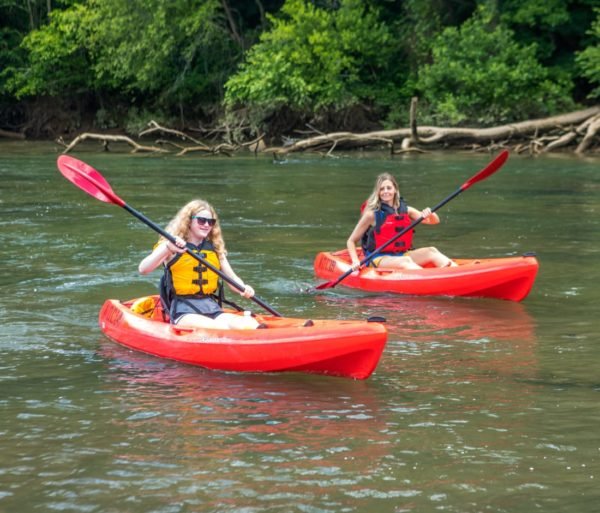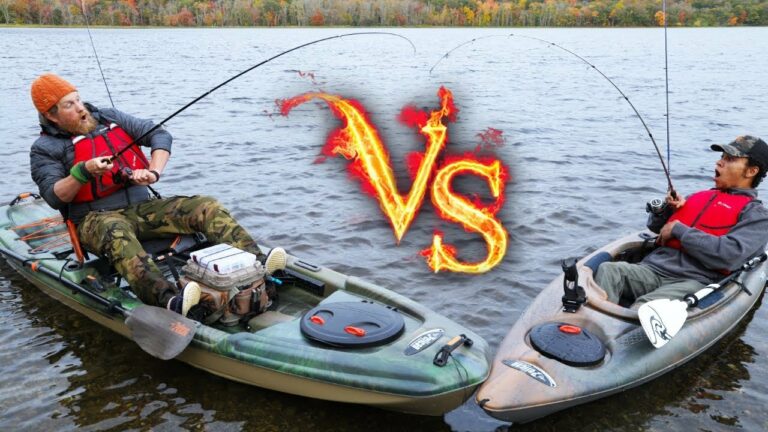Master The Correct Way To Hold A Fishing Pole
Looking for the right way to hold a fishing pole? In this article, we’ll cover the proper technique to enhance your fishing experience.
Whether you’re a beginner or experienced angler, holding your fishing pole correctly is crucial for a successful and comfortable trip. Let’s explore some tips for a firm grip, precise casting, and easy reeling.
The Correct Way to Hold a Fishing Pole
Whether you’re an experienced angler or a beginner, it’s crucial to know the correct way to hold a fishing pole.
This not only improves your casting accuracy but also gives you better control over the line and allows you to detect even the smallest nibble.
In this guide, we will cover grip, hand positioning, and different fishing styles. Let’s get started!
Understanding the Basics of Holding a Fishing Pole
Before we delve into the specifics, it’s important to understand the basic principles of holding a fishing pole. Here are a few key points to keep in mind:
- Ensure a relaxed grip: Holding the fishing pole too tightly can affect your casting distance and accuracy. Maintain a relaxed grip to allow for smooth and controlled movements.
- Balance is key: Hold the pole in a way that feels balanced and comfortable in your hands. This will help you maintain control and reduce fatigue during long fishing sessions.
- Adjust according to your fishing style: Different styles of fishing may require slight variations in how you hold the pole. Adapt your grip and hand positioning based on your preferred techniques.
The Basic Grip: Overhand or Underhand?
When it comes to the grip, anglers typically use either the overhand or underhand technique. Let’s explore both approaches and discuss their advantages and applications.
Overhand Grip
The overhand grip, also known as the “conventional grip,” is the most commonly used technique among anglers. To adopt this grip:
- Hold the fishing pole with your dominant hand.
- Place your thumb on top of the rod, pointing toward the rod tip.
- Wrap your fingers around the handle, ensuring a relaxed grip.
The overhand grip offers improved control and accuracy, making it ideal for techniques such as casting and jigging.
It allows for better wrist movement, enabling you to generate more power and precision in your casts.
Underhand Grip
The underhand grip also referred to as the “pistol grip,” is often utilized in specific fishing scenarios where more finesse is required. To adopt this grip:
- Hold the fishing pole with your dominant hand.
- Place your thumb underneath the rod, pointing toward the reel.
- Wrap your fingers around the handle, similar to holding a pistol.
The underhand grip excels in situations such as delicate presentations, where you need precise control over the line and lure.
It allows for subtle adjustments and gentle movements, making it a popular choice for techniques like drop shooting and finesse fishing.
Hand Positioning for Various Fishing Styles
Hand positioning is important for improving your fishing experience. Depending on your preferred fishing style, you may need to adjust how you position your hands. Here are some common fishing techniques and their corresponding hand positions:
Casting Techniques:
Casting techniques include baitcasting, spinning, and fly fishing. Correct hand positioning is essential for maximizing casting distance and accuracy. Here’s a guide to hand placement for each technique:
Baitcasting
When using a baitcasting reel, follow these steps for optimal hand positioning:
- Hold the rod with your dominant hand using the overhand grip.
- Place your thumb on the reel’s spool release button or line guide.
- Rest your non-dominant hand lightly on the rod’s handle.
This setup allows you to control the casting speed and accuracy by adjusting the pressure on the spool with your thumb. Your non-dominant hand provides stability and balance to counteract the force generated during the cast.
Spinning
Spinning reels are popular for their ease of use and versatility. To position your hands correctly for spinning techniques:
- Hold the rod with your dominant hand using the overhand grip.
- Place your index finger on the reel’s line roller.
- Rest your non-dominant hand gently on the rod’s handle or the reel’s base.
With this grip, you can control the line release during the cast by maintaining contact with the line roller. This technique ensures smoother and more controlled casting motions.
Fly Fishing
Fly fishing requires precise control over the line and delicate presentations. To achieve the correct hand positioning:
- Hold the rod with your dominant hand using the overhand grip.
- Place your index finger on top of the rod, resting lightly against the grip.
- Position your non-dominant hand above the reel, lightly cradling the line.
This grip allows for intricate fly manipulations, such as line mending and roll casting. With your non-dominant hand close to the reel, you can control the slack line and manage the tension effectively.
Other Fishing Styles: Bottom Fishing, Trolling, and Ice Fishing
Apart from casting techniques, other fishing styles like bottom fishing, trolling, and ice fishing require their own hand positioning approaches. Here’s a brief overview:
Bottom Fishing
When bottom fishing, it’s important to have a firm grip on the rod to feel even the subtlest bites. Opt for the overhand grip and position your hands as follows:
- Hold the rod with your dominant hand using the overhand grip.
- Place your non-dominant hand slightly above the reel seat.
This grip allows for better sensitivity, enabling you to detect bites and make quick hooksets.
Trolling
Trolling involves dragging lures or baited lines behind a moving boat. To maintain control and react swiftly to strikes, follow these hand positioning guidelines:
- Hold the rod with your dominant hand using the overhand grip.
- Place your non-dominant hand below the reel seat.
This grip provides stability and allows for quick rod movements required to set the hook while trolling.
Ice Fishing
Ice fishing presents unique challenges due to the limited space and thick ice cover. When ice fishing, position your hands as follows:
- Hold the rod with your dominant hand using the overhand grip.
- Place your non-dominant hand near the reel seat or on the rod blank.
This grip provides better control and stability when angling through small ice holes. Additionally, it allows for easier detection of subtle bites, crucial in ice fishing scenarios.
Practice Makes Perfect
Now that you’re well-versed in the correct way to hold a fishing pole, it’s time to put your knowledge into practice. Remember, becoming proficient requires constant practice and experimentation. Each angler is unique, so don’t hesitate to fine-tune your grip and hand positioning to suit your individual needs and preferences. So grab your fishing pole, head to your favorite fishing spot, and apply these techniques to enhance your fishing experience. Happy fishing!
Faqs for Correct Way To Hold A Fishing Pole:
1. What is the correct way to hold a fishing pole?
The correct way to hold a fishing pole is to grip it firmly but not too tightly. Place your dominant hand on the handle, with your thumb on top and your fingers wrapped around the grip.
Keep your wrist relaxed and avoid gripping too forcefully, as it can cause fatigue and decrease sensitivity in detecting bites.
2. Should I use both hands to hold the fishing pole?
While it is not necessary to use both hands to hold a fishing pole, using your non-dominant hand to support the pole can provide additional stability.
You can place your non-dominant hand on the lower part of the fishing rod, allowing for better control and balance while casting or reeling in a fish.
3. What is the best hand position for casting a fishing pole?
The best hand position for casting a fishing pole is to hold the handle with your dominant hand and place your thumb on top of the grip. This allows for better control and accuracy when casting.
Additionally, keep your wrist straight and use your forearm and shoulder to generate the casting motion, rather than relying solely on your wrist.
4. How should I hold the fishing pole when reeling in a fish?
When reeling in a fish, maintain a firm grip on the fishing pole handle with your dominant hand and use your non-dominant hand to guide and support the fishing line as it is being retrieved.
By keeping a steady and controlled grip, you can effectively reel in the fish without losing tension or compromising your balance.
5. What are some tips for holding a fishing pole for long periods?
To hold a fishing pole for long periods without experiencing discomfort, it is important to maintain a relaxed grip and avoid gripping too tightly.
Additionally, take breaks and periodically stretch your fingers, wrist, and forearm muscles to prevent fatigue.
Using a fishing pole with a comfortable handle and ergonomic design can also help reduce strain during extended fishing sessions.
6. Is there a specific hand placement for different fishing techniques?
While the general hand placement for holding a fishing pole remains consistent, different fishing techniques may require slight adjustments.
For example, when using a spinning reel, you may need to place your non-dominant hand on the reel stem to control the line release.
Alternatively, when fly fishing, you may need to adjust your grip to accommodate the unique casting motion involved in this technique.
It is important to familiarize yourself with the specific requirements of each fishing technique to ensure proper hand placement.
Final Thoughts
Properly holding a fishing pole is important for successful fishing. Firmly grip the handle, position the reel correctly, and hold the rod at a comfortable angle to maintain control and accuracy. Keep the wrist relaxed and use the proper grip technique to prevent fatigue and increase sensitivity. Mastering the correct way to hold a fishing pole is essential for maximizing your chance of catching big fish. Practice these techniques and enjoy fishing to the fullest.

